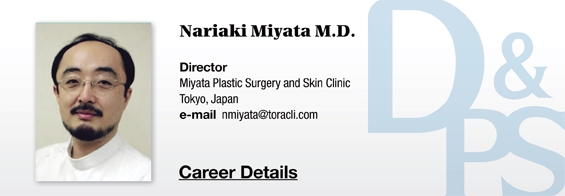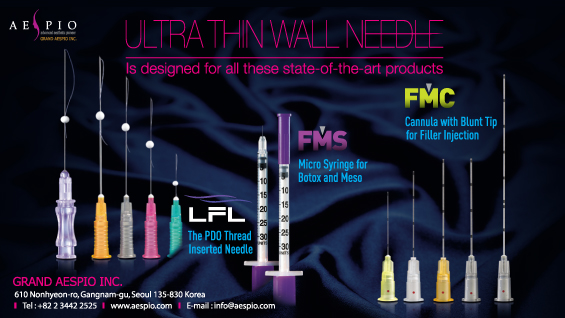
Affinite is another promising method of wrinkle removal. It sprays strong micro water currents to deliver AHA into the pores and improve wrinkles. This device is not available in Japan yet and I look forward to its introduction in Japan.
Injectables such as dermal fillers and botulinum toxin are also used for wrinkle removal. In the last article, we discussed how these treatments are faring in Japan. As I have mentioned, Japanese patients desire subtle changes and most doctors are conservative in their approach to treatment. Except for a few doctors that are audacious enough to try more aggressive techniques, most doctors prefer safer options. Therefore, the market for botulinum toxin and other injectables is still quite small.
In the early days, no botulinum toxin products could obtain approval in Japan. Patients also avoided it as it was an intramuscular injection and improvement came with unnatural facial expressions. Such a widespread concern about the side effects of botulinum toxin served as a large obstacle to its widespread use in Japan.
However, as doctors fine-tuned their techniques over time and Allergan aggressively advertised their approved products, more people are choosing to receive the treatment. Recently, even novice doctors are performing botulinum toxin injections. However, many still remain hesitant. The subcutaneous injection is safer than other more invasive treatments. However, academic seminars are much less frequent than in Korea and doctors often struggle to learn new techniques.
[Advertisement] ULTRA THIN WALL NEEDLE – Manufacturer: AESPIO(www.aespio.com)
Hyaluronic acid (HA) injection is generally used in sagging and indented areas and is not expected to improve wrinkles. This can be overcome by using low cross-linking or soft HA.
The HA injection, nicknamed ‘Water glow injection,’ was developed in Korea and entered the Japanese market to great success. This method provides non-crosslinked or low density crosslinked HA into the dermis and improves fine lines. The injection site develops edema and wheal for days after treatment. To avoid this, only small amounts are injected in shallow depths in Japan. However, more aggressive injection would bring a better outcome. Patients who have experienced the benefit tend to tolerate the side effects that only lasts a few days.
In my practice, I frequently use atelocollagen for wrinkle removal. Atelogollagen is no longer manufactured in the rest of the world, however, the Japanese company Koken continues to produce bovine derived atelocollagen. Aesthetic clinicians who have been in practice for some time still use atelocollagen frequently. It has excellent biocompatibility even in thin skin and does not cause bumps or color changes. I think it is most effective in wrinkles that are not accompanied with sagging. Recently, porcine collagen with low risk of allergic reaction and high-cost human collagen have been developed. These products offer new possibilities in the collagen market. Linear wrinkles mainly develop from volume loss in the dermis. Replenishing collagen, a key component of dermis, brings effective rejuvenation. Therefore, stable growth in the collagen market is expected.
Wrinkle removal is not a simple treatment. Age-related damage of the skin, loss of elasticity and drying, etc. are among the various factors affecting wrinkles. In particular, wrinkles caused by sagging skin will not improve unless the sagging is addressed.
Local treatments of isolated wrinkles may work well but in some cases, improving the overall skin texture and elasticity can bring better results. Doctors should consider all aspects when treating local wrinkles.
-To be continued




















